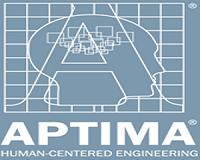| . |  |
. |
Beale AFB CA (SPX) Aug 10, 2010 In a first of many joint meetings, Beale Air Force Base leaders hosted a Global Hawk and Broad Area Maritime Surveillance Joint Cockpit Working Group Aug. 3 through 5. The group met to develop joint operations and training with the Air Force and the Navy remotely piloted RQ-4 and BAMS programs. The joint working group formed because of a signed memorandum of agreement between the chief of staff of the Air Force and the chief of naval operations to better utilized joint efficiencies in the RQ-4 and BAMS remotely piloted aircraft programs. "We are out here to see how you do business and figure out how we can best fit our program alongside yours to save the tax payer some money," said Navy Cmdr. Wes Naylor from the BAMS program office at Naval Air Station Patuxent River, Md. Navy officials observed how the 1st Reconnaissance Squadron trains future Global Hawk pilots and how the 12th RQS employs the RQ-4 in combat theaters. "It's amazing how much similarity there is between the ways the Air Force and we (Navy) train, and it does not make any sense for us to start over and develop a completely separate program," Commander Naylor said. "The Air Force already has a proven training system in place. We have a few different requirements with the different payloads and that requires a little bit different training." Even though the Joint Charter has not yet been signed, the JCWG will be meeting frequently to build joint training and operational programs, Lt. Col. Steven Edgar, with the 1st RQS, said "All of system similarities will be capitalized upon and those small areas of differences that remain will be accepted as unique mission employment requirements," said Colonel Edgar. "It should be transparent to a pilot flying the aircraft, whether they are from the U.S. Navy or the U.S. Air Force, there should be no difference between an RQ-4 or a BAMS cockpit. They should be able to fly either aircraft at any moment." Another objective of the program is to come up with a common work environment for both Air Force and Navy aviators. "Having commonality solves problems for operators across the spectrum because no matter where you go, when you sit down you know exactly what to expect and what you are going to be looking at," Colonel Edgar said. The ultimate goal of the working group is for each branch of service to fly each other's aircraft and also the possible formation of joint Air Force and Navy RQ-4 Global Hawk and BAMS squadrons. "We envision a time when the pilots fly each other's aircraft for takeoffs and landing and en route," Commander Naylor said. "We fly different combat missions, and we would not fly each other's combat missions, however a good portion of the flying can be done jointly."
Share This Article With Planet Earth
Related Links US Air Force UAV News - Suppliers and Technology
 Aptima Teams Up To Extend Human Intelligence To UAVS
Aptima Teams Up To Extend Human Intelligence To UAVSWoburn MA (SPX) Aug 06, 2010 In less than a decade, unmanned aerial vehicles (UAVs) have evolved from a curiosity on the battlefield to a core 'eyes in the sky' resource for the US military. Yet, as more UAVs enter the battlespace for new and novel uses, these unmanned systems will need to operate more intelligently and autonomously, evading enemy hazards and adapting to the changing mission conditions with reduced hu ... read more |
|
| The content herein, unless otherwise known to be public domain, are Copyright 1995-2010 - SpaceDaily. AFP and UPI Wire Stories are copyright Agence France-Presse and United Press International. ESA Portal Reports are copyright European Space Agency. All NASA sourced material is public domain. Additional copyrights may apply in whole or part to other bona fide parties. Advertising does not imply endorsement,agreement or approval of any opinions, statements or information provided by SpaceDaily on any Web page published or hosted by SpaceDaily. Privacy Statement |